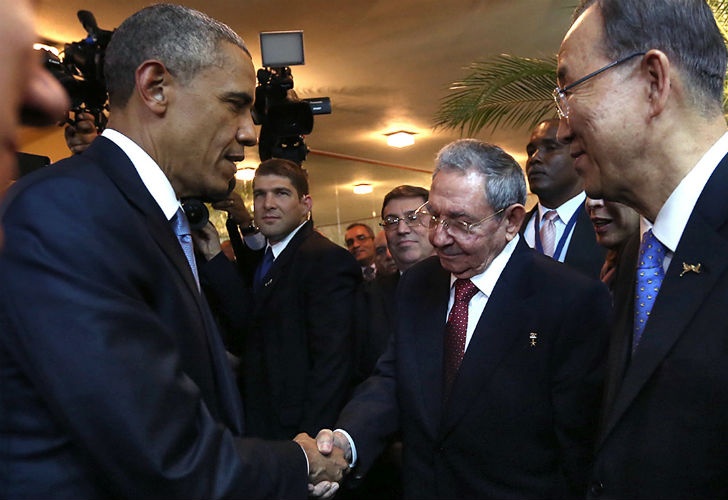The Other Face of the VII Summit of the Americas
Article published in Perfil: http://www.perfil.com/internacional/La-otra-cara-de-la-VII-Cumbre-de-las-Americas-20150414-0007.html
Original spanish version available here: http://www.cries.org/?p=2624
The importance of the central theme of the Summit – “Equity with Prosperity” – was overshadowed by the political impact of the meeting between the US and Cuba. The dialogue initiated by the governments of the two countries for the reestablishment of relations, the bilateral meeting between Obama and Raul Castro, both of their press conferences, the photo of them shaking hands, took the spotlight. The speeches of both presidents were of a cordial tone; although without concessions in their respective visions, they kept the historical confrontation relegated to the past, following the mindset of respect for the different perspectives of each government. In the end, the photo that stole the show at the Summit was that of Obama and Castro.
In the margins – and colored with the nostalgia of a dim past – were the addresses charged with anti-American rhetoric of Christina Fernández, Evo Morales, Rafael Correa and Nicolás Maduro, which did not appear to catch the signs of change in the political climate introduced in the Summit by the Cuba-USA interactions. Maduro in particular, did not succeed in his aim of including in the Summit’s final statement a denunciation of the sanctions imposed by the US on some of his officials.
There was no official declaration for the Summit, in spite of the thorough preparation – both in the technical aspects as in the attempt at constructing a political consensus – by the host, Panama, which had achieved both Cuba and the US’ participation. The Bolivarian prominence, which, at certain moments, Hugo Chávez had brought to previous Summits, was not present this time. Condemned on CNN by Dilma Rousseff, by the declarations of the new Uruguayan government, and by the parallel meeting which Tabaré Vásquez, Barack Obama, and the Costa Rican president Luis Guillermo Solís had with the Cuban dissidents and Venezuelan opponents, the final blow to the Bolivarian government was delivered by the document signed by the 26 ex-presidents which denounced the detention of political opponents and violations of human rights in Venezuela. It was only near the end of the event that Maduro even managed to obtain a 15-minute bilateral meeting with Obama.
Meanwhile, in the background, the Youth Forum and the Governing Forum convened by the Summit were advancing concrete proposals in the fields of training and higher education. The Civil Society Forum was the stage for a confrontation between opposition and official organizations from Venezuela and Cuba, although it was the only trace of a commotion which otherwise did not move past the streets. For its part, the simultaneous Social Summit of the People, convened by various social movements, elaborated on condemnations and denunciations of the role of the US in the region, which traced back to old rhetoric and seemed in disaccord with what constituted the predominant feel of the Summit – the reestablishment of the Cuban-US dialogue and the full incorporation of the island into the hemispheric dynamic.
In contrast, at the start of the Summit week, CRIES organized a colloquium of academics, experts, and networks of civil society which was inaugurated by the Vice-President and Chancellor of Panama, Isabel St. Malo. Considering the regional processes and the normalization of relations between Cuba and the US, the conference joined Cuban and American academics and social representatives, together with a large group of experts on Latin America and the Caribbean, to tackle the political realities of the new emerging hemispheric relations, as well the importance of the full incorporation of Cuba into the regional community, all in a setting of rigorous academic quality and fruitful dialogue and exchange.
In summary, the Summit – a part from marking a milestone in the relations between the region’s countries and a new atmosphere of dialogue and cooperation between the US and Cuba and thus ending the long process of absences and ongoing regional advances – gave rise to a renewed encounter between political and social actors in a framework of pragmatism and a proactive approach. Even without a final declaration on its central issue, it was definitely a Summit which, despite the marked differences between some of its participants, left a highly positive note for the Americas and, possibly, for the development of new modalities of global incorporation for the region.

